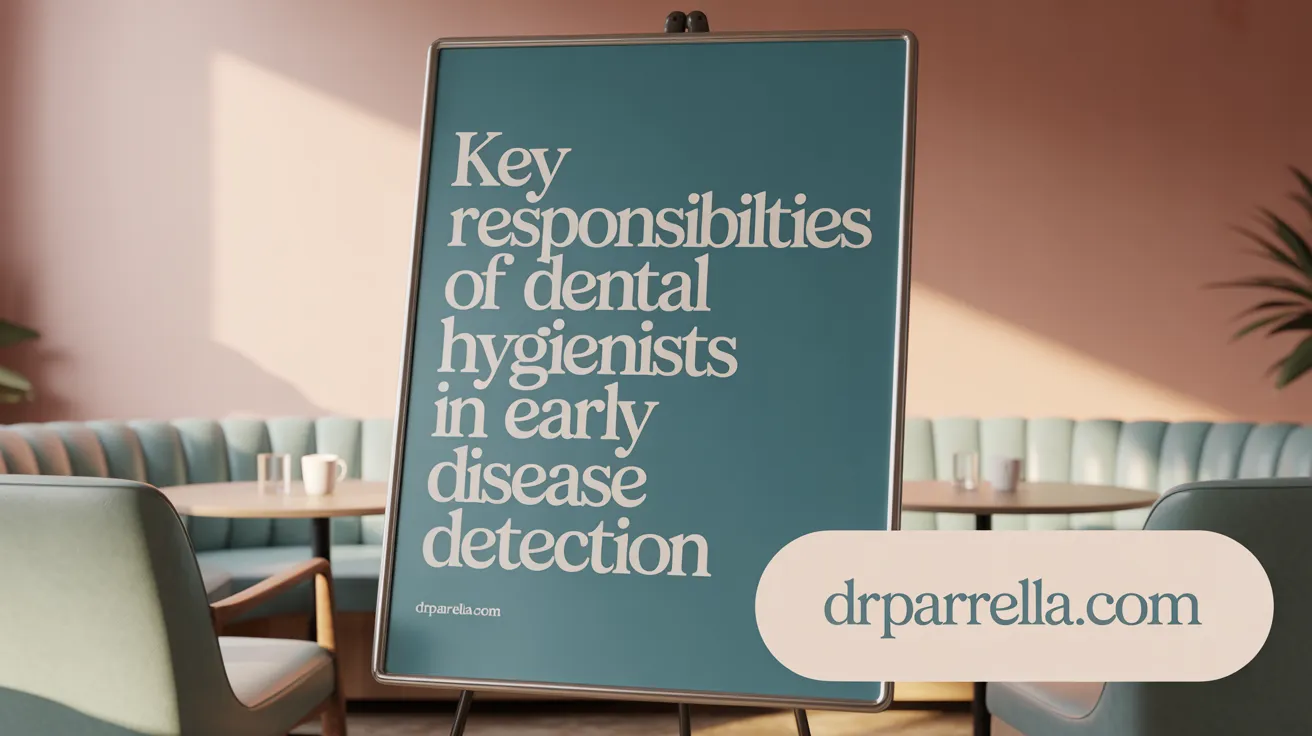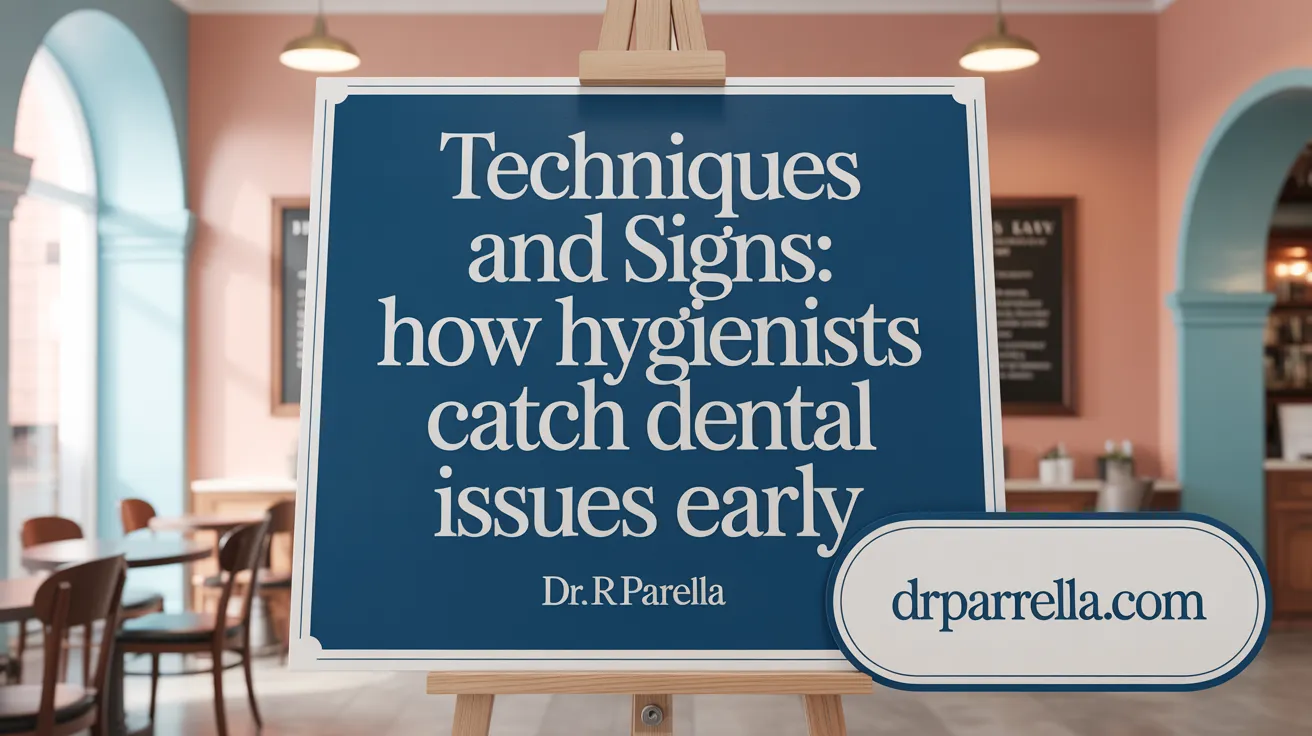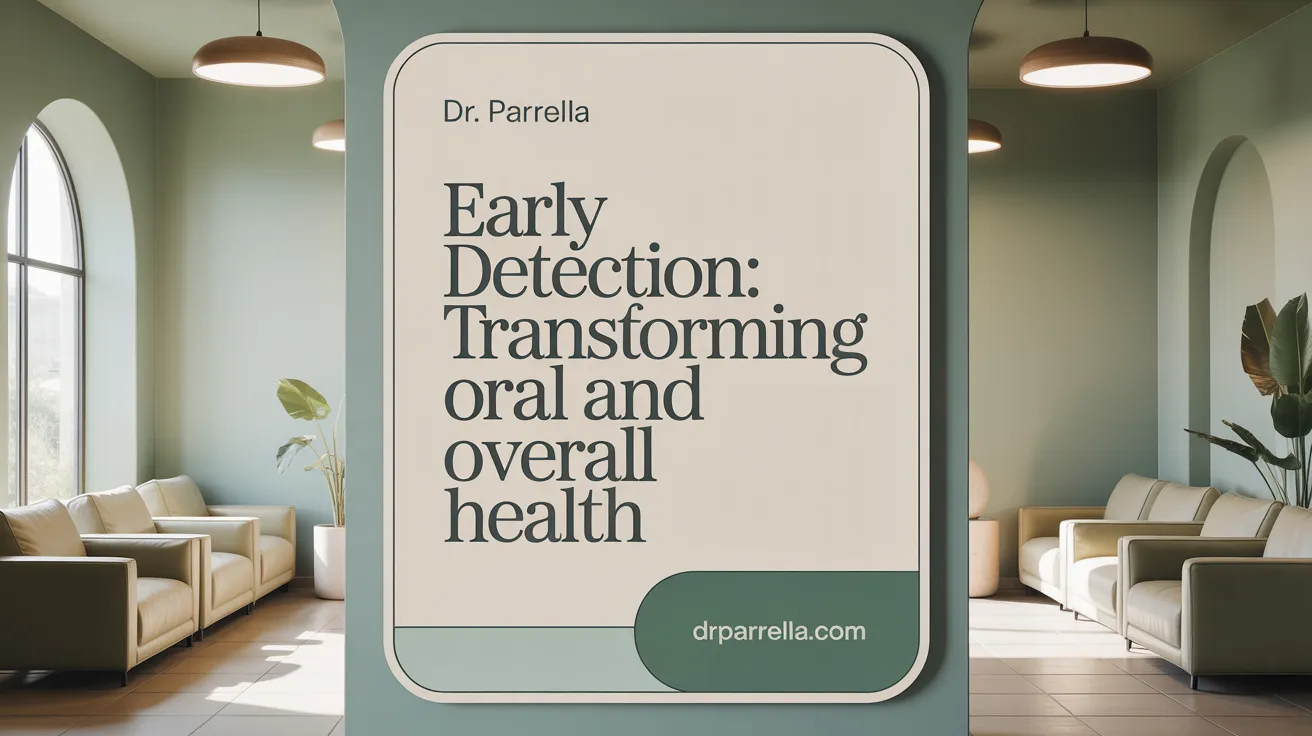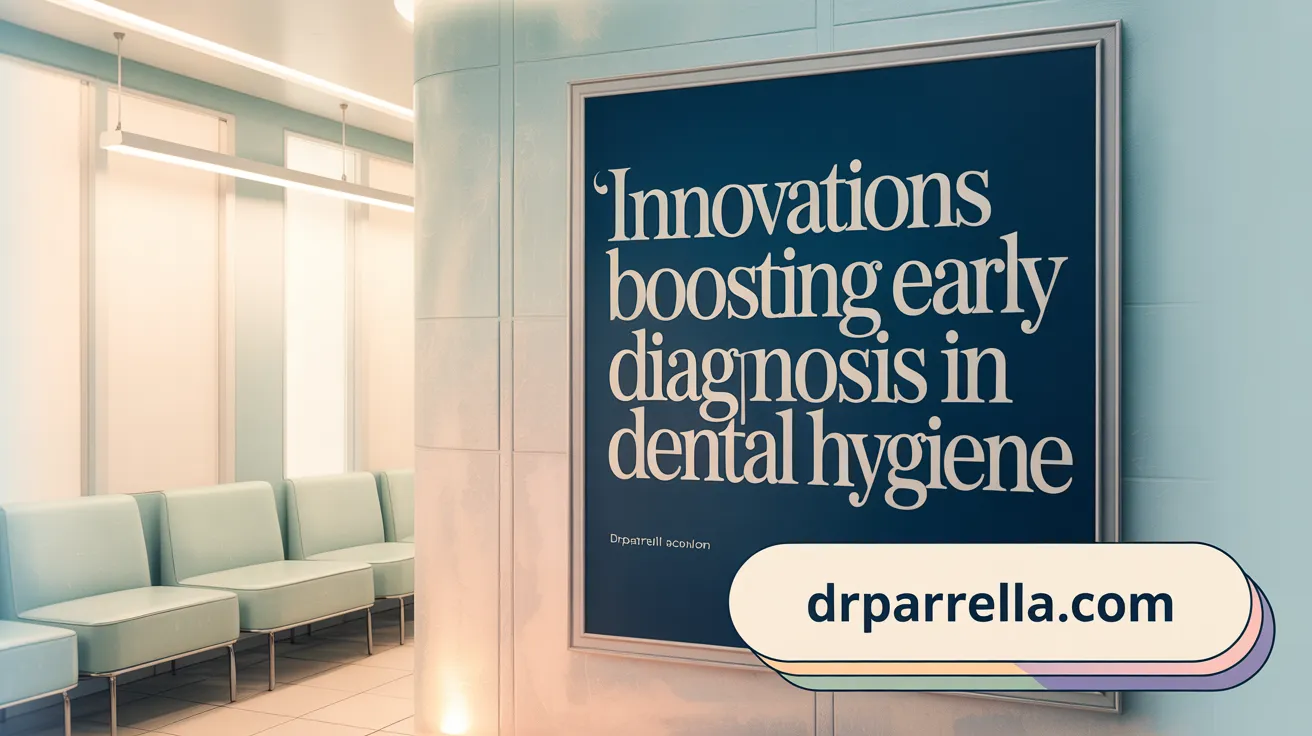Understanding the Crucial Role of Dental Hygienists
Dental hygienists are indispensable members of the dental healthcare team, playing a pivotal role in the early detection and prevention of dental and systemic health issues. Through comprehensive oral assessments, patient education, and utilization of advanced diagnostic technologies, hygienists contribute not only to maintaining oral health but also to identifying early signs of systemic diseases. This article explores the multifaceted responsibilities of dental hygienists in early diagnosis, their impact on overall wellbeing, and the importance of preventive dental care.
<!-- VIDEO:eyJsaW5rIjoiaHR0cHM6Ly93d3cueW91dHViZS5jb20vd2F0Y2g/dj1fbV85Zl80R2JFOCIsImltYWdlVXJsIjoiaHR0cHM6Ly9lbmNyeXB0ZWQtdGJuMC5nc3RhdGljLmNvbS9pbWFnZXM/cT10Ym46QU5kOUdjUklVR2FsTmgySVZpUmFacXJfNUZBT1RJdEVtcmw5MXk0VnZ5VmFnVldRSVM1TCZzIiwidGl0bGUiOiJUaGUgNSBSb2xlcyBvZiBhIERlbnRhbCBIeWdpZW5pc3QiLCJzbmlwcGV0IjoiVGhlICNBREhBIG91dGxpbmVzIHRoZSBmaXZlIHByaW1hcnkgcm9sZXMgb2YgYSAjZGVudGFsaHlnaWVuaXN0LiBXZSdyZSBnb2luZyB0byBkZWx2ZSBpbnRvIHRoZXNlIHJvbGVzLCB3aGF0IHRoZXkgbWVhbiBhbmQgZW50YWlsLCAuLi4ifQ== -->Primary Roles and Responsibilities of Dental Hygienists in Early Detection
 Dental hygienists are essential in recognizing dental problems early, acting as frontline professionals in preventive oral health care. Their primary responsibilities include conducting thorough health assessments and screenings during routine visits. They examine patients for signs of cavities, gum disease, oral lesions, and potential indicators of oral cancer. By reviewing medical and dental histories, hygienists identify risk factors that could lead to more severe health issues if left untreated.
Dental hygienists are essential in recognizing dental problems early, acting as frontline professionals in preventive oral health care. Their primary responsibilities include conducting thorough health assessments and screenings during routine visits. They examine patients for signs of cavities, gum disease, oral lesions, and potential indicators of oral cancer. By reviewing medical and dental histories, hygienists identify risk factors that could lead to more severe health issues if left untreated.
In addition to assessments, dental hygienists utilize diagnostic tools such as dental X-rays, intraoral cameras, and fluorescence devices to detect early-stage problems that may not be visible to the naked eye. This early detection is crucial in establishing minimally invasive treatments like fluoride therapy or sealants, which can halt or slow the progression of decay.
Collaboration with dentists forms a key part of their role. Hygienists communicate their findings, assist in diagnosis, and help develop personalized preventive strategies. Their vigilance allows for the early identification of systemic conditions such as diabetes or cardiovascular disease that can manifest orally.
Patient education is another vital aspect. Hygienists educate patients on effective oral hygiene techniques, risk reduction, and the importance of regular dental visits. They meticulously document their assessments and interventions, ensuring continuous monitoring and follow-up. Overall, dental hygienists significantly contribute to early diagnosis, helping prevent complex health issues, and fostering healthier lives through proactive care.
Methods and Signs Used by Dental Hygienists for Early Detection
 Dental hygienists use a variety of techniques and signs to identify early stages of dental problems, which is crucial for effective prevention and treatment.
Dental hygienists use a variety of techniques and signs to identify early stages of dental problems, which is crucial for effective prevention and treatment.
One of their primary approaches is the visual and physical examination. They thoroughly inspect the patient's teeth, gums, and soft tissues for signs of cavities, gum inflammation, oral ulcers, lesions, or abnormalities. Periodontal probing helps measure pocket depths around teeth, revealing early signs of gum disease like gingivitis, which can be reversed if caught early.
In addition to manual assessments, dental hygienists employ advanced diagnostic tools to enhance detection sensitivity. Digital X-rays are standard for visualizing areas beneath the surface, identifying hidden cavities, bone loss, or infections that are not visible to the naked eye. Intraoral cameras provide real-time imaging, allowing both clinicians and patients to see issues clearly.
Fluorescence devices such as DIAGNOdent and Quantitative Light-induced Fluorescence (QLF) are used to detect early enamel demineralization and incipient caries with high accuracy. Near-infrared transillumination is another technique that illuminates enamel and dentin to reveal early lesions, particularly effective in interproximal regions.
Hygienists also assess signs of systemic health issues reflected orally, including oral ulcers, white or red patches, or other tissue changes linked to autoimmune or systemic diseases. These observations can prompt further medical referral, as detailed in The Role of the Dental Hygienist in a Comprehensive Healthcare Dental Office.
Furthermore, observing patient-reported symptoms offers important clues. Complaints like tooth sensitivity, bleeding gums, bad breath, or tissue discoloration often indicate underlying early issues (8 Common Problems Dental Hygienists See in Middle-Aged Adults).
Overall, the combination of these methods allows dental hygienists to catch problems at their initial stages, enabling minimally invasive interventions that preserve oral health and prevent more complex treatments (Early detection and treatment of dental issues).
The Vital Impact of Early Detection on Oral and Systemic Health

Why is early detection of dental issues important for both oral and systemic health?
Early detection of dental issues is fundamental because it helps prevent the development and escalation of oral diseases such as cavities, gum disease, and oral cancer. When these problems are identified at an initial stage, treatments tend to be less invasive, more effective, and less costly, which enhances patient comfort and reduces long-term healthcare expenses. For more on early detection in dental health, see this resource.
Dental professionals utilize advanced diagnostic tools—like digital X-rays, fluorescence devices, and laser therapies—that enable the visualization and monitoring of potential issues long before they manifest symptoms. This proactive approach not only preserves natural teeth and oral function but also minimizes discomfort and the need for extensive procedures. Learn more about detection of early caries and advanced optical diagnostic tools.
Equally important, accumulating evidence underscores the close link between oral health and overall systemic health. Conditions such as cardiovascular disease, diabetes, respiratory infections, and adverse pregnancy outcomes have been associated with neglected oral health. Bacteria from infected gums, for example, can enter the bloodstream, leading to inflammation throughout the body. The role of dental hygienists in oral and systemic health explains this connection in detail.
Regular dental exams facilitate early recognition of systemic disease markers—such as changes in oral tissues, persistent inflammation, or abnormal bleeding—that may indicate more serious underlying health conditions. Detecting these signs early during routine check-ups allows for timely referrals and interventions, ultimately improving overall health and longevity. For further reading, see how general dentists help detect early signs of oral disease.
In brief, early diagnosis through consistent dental care supports better health outcomes, reduces treatment burdens, and promotes a healthier lifestyle characterized by increased confidence and well-being. Additional insights on the importance of dental hygiene and preventive care are available.
Technologies and Advancements Enhancing Early Diagnosis
 Dental hygienists are increasingly reliant on cutting-edge technologies to detect dental problems early, improving patient outcomes and reducing invasive treatments. Digital radiography has revolutionized dental imaging by providing clear, detailed images of teeth and supporting structures with reduced radiation exposure compared to traditional X-rays. Intraoral cameras allow hygienists to visualize hard-to-see areas inside the mouth, enabling immediate assessment and patient education (What Your Dental Hygienist Sees).
Dental hygienists are increasingly reliant on cutting-edge technologies to detect dental problems early, improving patient outcomes and reducing invasive treatments. Digital radiography has revolutionized dental imaging by providing clear, detailed images of teeth and supporting structures with reduced radiation exposure compared to traditional X-rays. Intraoral cameras allow hygienists to visualize hard-to-see areas inside the mouth, enabling immediate assessment and patient education (What Your Dental Hygienist Sees).
Laser fluorescence devices, such as DIAGNOdent, are used to identify early enamel decay that might be missed during visual inspection. These tools emit a laser light that fluoresces differently depending on the presence of caries, assisting hygienists in pinpointing areas needing attention (Detection of early caries).
Plaque disclosing agents are also employed to highlight plaque accumulation, revealing where bacteria are thriving and guiding effective cleaning efforts (Dental hygienists and preventive care).
Recent technological progress includes the integration of artificial intelligence (AI) into dental diagnostics. AI-powered systems analyze images from radiographs and intraoral scans with high accuracy, detecting early-stage caries, periodontal disease, and even oral cancers (Detect Early Tooth Decay). These applications help automate routine diagnostic tasks, minimize human error, and offer predictive insights into disease progression.
AI can also assist in generating personalized treatment plans by evaluating patient history and imaging results, enhancing preventive strategies tailored to individual needs. Chatbots and patient management platforms further utilize AI to provide education, answer concerns, and remind patients about appointments, fostering a proactive approach to oral health (The Crucial Role of Dental Hygienists in Your Oral Health).
The benefits of these innovations are significant: faster diagnosis, more precise detection of early lesions, improved patient understanding, and optimized prevention. As technology continues to evolve, the integration of digital imaging, laser fluorescence, and AI is set to transform early diagnosis practices in dental hygiene—making care more effective, efficient, and patient-centered (Early detection in dental health).
Preventive Care and the Role of Regular Dental Visits
Regular dental visits are vital components in maintaining good oral health and preventing serious dental problems. These routine check-ups facilitate early detection of issues like cavities, gum disease, and oral cancer, often before symptoms appear. By using diagnostic tools such as dental X-rays, dental hygienists and dentists can visualize problems that lie beneath the surface of teeth and gums, enabling early intervention.
Preventive treatments during these visits include professional cleanings, fluoride applications, and sealants, which help strengthen teeth and reduce the risk of decay. Patient education is also a key aspect, where dental professionals teach effective oral hygiene practices and guide individuals on lifestyle choices, such as diet and smoking cessation, that impact oral health.
These proactive measures create a foundation for early diagnosis, ensuring that dental issues are managed promptly, often through less invasive and cost-effective means. Early intervention not only minimizes discomfort and the progression of disease but also reduces overall healthcare expenses by avoiding extensive procedures later.
This approach fosters a long-term partnership between patients and dental providers, supporting healthier smiles and overall well-being. While ongoing research continues to evaluate the full benefits, especially for children and high-risk groups, the consensus underscores that regular dental visits are a cornerstone of preventive health care, helping identify problems early and lay the groundwork for lifelong oral health.
Dental Hygienists in the Dental Healthcare Team and Their Broader Health Impact
What is the significance of dental hygienists within the dental healthcare team regarding early intervention?
Dental hygienists are vital members of the dental healthcare team because they focus on prevention and early detection of oral health issues. They routinely perform screenings, risk assessments, and professional cleanings, which helps identify early signs of dental problems such as cavities, gum disease, and even oral indications of systemic diseases like diabetes or heart conditions (Role of the Dental Hygienist in Healthcare).
Their expertise allows for timely referrals to dentists or medical professionals when systemic health concerns are detected through oral examinations. This proactive stance not only addresses dental issues early but also contributes to overall health management.
Furthermore, dental hygienists educate patients on effective oral hygiene practices, nutritional guidance, and lifestyle choices, fostering early adoption of healthy habits. This education is particularly important in pediatric settings, where hygienists help detect dental problems early and promote positive attitudes toward oral health.
Overall, dental hygienists' role in early intervention leads to better long-term health outcomes by preventing disease progression, reducing the need for invasive treatments, and supporting a holistic approach to health care.
Conclusion: The Indispensable Role of Dental Hygienists in Health Promotion
Dental hygienists are frontline warriors in the battle against dental and systemic diseases, leveraging their expertise to detect problems at the earliest stages through meticulous examinations and cutting-edge technology. Their educational roles empower patients with the knowledge and behaviors necessary to maintain oral and overall health. By integrating preventive care, early diagnosis, and collaboration with the broader healthcare team, dental hygienists help avert serious health complications, improve treatment outcomes, and reduce healthcare costs. Recognizing and supporting the vital role of dental hygienists is essential for advancing oral health and holistic well-being in society.
